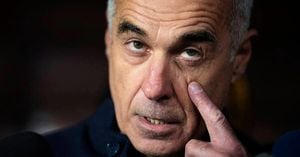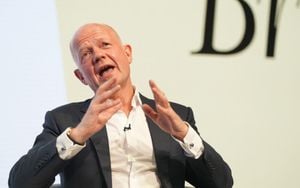Inflation has been on everyone’s mind lately, and for good reason. After years of steady decline, the latest reports show some unsavory news: inflation seems to have stalled, particularly with the October figures coming out recently.
According to the Federal Reserve’s favorite inflation measure—the Personal Consumption Expenditures (PCE) index—consumer prices rose by 2.3% year over year in October. This marks an uptick from 2.1% recorded just the month prior. After nearly two years of declining inflation figures, analysts were taken aback by the recent reversal.
Essentially, October brought the first increase to the PCE index since July, and the venture upwards wasn’t something many investors had anticipated. Just last month, the drop from 2.5% to 2.1% had painted a rosy picture, offering some optimism toward the future. But here we are again, grappling with inflation not just hanging around, but creeping back up.
This situation is particularly alarming as it arrives mere weeks before the Federal Reserve holds its final meeting of the year on December 17 and 18. Following these recent developments, many are left wondering how, if at all, the Fed will alter its stance on interest rates.
Seventy percent of traders who predict interest rate movements were previously confident about a potential 25-basis point cut. Now, with inflation once again on the rise, the board may have to reconsider its options before making any decisive moves.
The stock market didn’t take this news lightly. Post-announcement, trading figures showed the three major indices, including the S&P 500, the Dow Jones Industrial Average, and the Nasdaq Composite, all moving southward. The S&P fell 0.5%, the Dow Jones dipped 0.2%, and the Nasdaq was down 0.9%. On the flip side, the small-cap Russell 2000 bucked the trend slightly with a modest increase of 0.2%. It’s strange how the market can react so firmly—asserting its apprehensions toward inflation even as other facets look promising.
Shoppers have likely felt the pinch as well. A simple stroll through any retail establishment reveals rising costs on grocery items and everyday essentials, leading to inevitable consumer fatigue. At Costco, shoppers were seen reaching for the same items they once found cheaper just months ago. Many are now forced to make adjustments to their shopping habits, stretching their budgets even thinner.
It’s important to note the broader ramifications of this inflationary pressure. The Fed looks toward inflation data, employment rates, and overall economic health to guide its decisions, not just the month-to-month changes we all get caught up in. The central bank needs to take time to weigh the options, knowing full well its decisions can have cascading effects on the economy.
So, why is inflation rising again? Quite simply, it is the complex interplay of various economic factors, including supply chains remaining shaky and demand among consumers staying elevated. Add to this mix the unpredictable elements brought on by global events, and it’s easy to see why the path forward is rockier than expected.
For now, it appears we’re at a crossroads. A stable yet troubled economic environment makes it tough to foresee the immediate future. The Fed’s actions over the next month will likely determine whether inflation is deemed just a hiccup on the road to recovery or indicative of larger, underlying issues.
All eyes will be on those December meetings. Financial analysts, investors, and everyday shoppers alike are holding their breath as they await guidance on what these rising inflation numbers mean for their wallets—and the economy as a whole.



